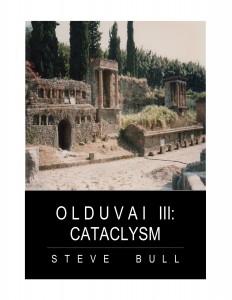Home » Posts tagged 'prepping' (Page 4)
Tag Archives: prepping
Sunchokes: The Ultimate Prepper Survival Food
Sunchokes: The Ultimate Prepper Survival Food “Keep your face to the sunshine, and you cannot see the shadow. It’s what sunflowers do.”— Helen Keller. The sunflower should be the symbol of preppers and survivors, and it’s the unsung hero that every prepper should grow, know how to recognize in the wild, and use. Helianthus comprises […]
6 Just-Add-Water Meals That Belong In Your Prepper Pantry
6 Just-Add-Water Meals That Belong In Your Prepper Pantry When we are faced with dramatic emergency situations, convenience can help keep us calm and eliminate some of the added stress that’s inevitable during a crisis. That’s why convenience is one of the basic rules to creating a solid emergency food pantry. When we are faced […]
Building a Dakota Fire Pit
Building a Dakota Fire Pit “Anywhere the struggle is great, the level of ingenuity and inventiveness is high.”– Eleni Zaude Gabre-Madhin There are several dangerous aspects to a post-disaster open fire or even a fire in the wild. High winds can make your fire difficult to light, and sparks can cause your fire to grow […]
Marti’s Corner – 38
Marti’s Corner – 38 NOTES: * Here is a great article about storing water: Drinking Water Guidelines. * I came across a FaceBook group called, “Simply Prepared With CFD Publications.” From there I found this website: CFD Publications You will find a lot of good information in both places. You will also find a book called Pantry Cooking by […]
The Current Supply Chain Crisis Could Throw The Global Economy Off Course!
The Current Supply Chain Crisis Could Throw The Global Economy Off Course! Be ready! The current supply chain crisis is becoming noticeable to most at this point and it could toss the entire global economy off course. With just the right problem, we could all be facing shortages that would make the toilet paper incident […]
15 Common Dynamics of SHTF Collapses
15 Common Dynamics of SHTF Collapses When it comes to how we see and prepare for SHTF, thinking in terms of real and probable rather than fictional and possible can make a big difference. Even though SHTF has many forms and levels and is in essence complex, random, diverse and unsystematic, some patterns and principles are common to the way things unfold […]
Marti’s Corner – 37
Marti’s Corner – 37 * Here is the email I got from USU Extension this week: PLAN Meet with your family or household and discuss the disasters that are most likely to occur. Review basic actions for each situation and decide on a family meeting place. Decide how you’ll contact each other if separated. PREPARE […]
Signs The Worst Winter in Years is Coming
Signs The Worst Winter in Years is Coming “You think winter will never end, and then, when you don’t expect it, when you have almost forgotten it, warmth comes and a different light” – Wendell Berry. It’s hard to think about winter when many regions are broiling in the sun right now, but there are […]
Take us to DEFCON 1
Take us to DEFCON 1 The US military defines its Defense Readiness Condition (DEFCON) levels as follows: DEFCON 5 is normal readiness. DEFCON 4 is above normal readiness. DEFCON 3 is the air force ready to mobilize in 15 minutes. DEFCON 2 is all forces ready to fight in 6 hours. DEFCON 1 is the […]
Marti’s Corner – 35
Marti’s Corner – 35 Hi Everyone, NOTES: * More reasons to stock up. And Now It’s Oats * Time to feed your garden again. I use a vegetable fertilizer with mycorrhizae fungi. I just buy it at Lowe’s. I like Kellogg’s brand, NOT this one, but similar. Dr. Earth Organic 5 Tomato Fertilizer. In addition to the […]
The case for contingency planning
The case for contingency planning LONG-ODDS BET OR A PORTFOLIO OF SCENARIOS? An intelligent investor – as distinct from a gambler – doesn’t put all his or her money on a single counter. He doesn’t stake everything on a single stock, a single sector, a single asset class, a single country or a single currency. […]
How to Make Mead
How to Make Mead Short Course in Mead Making: Prepper’s Abbreviated Guide to Mead It’s probably the first alcoholic beverage ever consumed. Honey, water, and any natural occurring yeast is all you need to make Mead– a fermented beverage of honey, water, yeast, and sometimes grains, herbs, and spices. It can range from a low […]
How to Make Meat Powder – A DIY Recipe
How to Make Meat Powder – A DIY Recipe If they ever had to turn to their food preps out of a pure emergency, many preppers would find it extremely tough to make it through on rice, beans, and canned goods alone. Getting the right nutrient mix and maintaining that through an extended disaster is […]
How to Pickle Food: A Beginner’s Guide
How to Pickle Food: A Beginner’s Guide In this blog, I’m going to give you the ultimate crash course in pickling. It is likely you’ll never buy a store-bought lifeless can of sliced jalapenos or a limp dill pickle again after watching this. I will also share with you my recipe for Prepper Pickled Pepper […]
You’re Not Going to Homestead Through Collapse
You’re Not Going to Homestead Through Collapse No matter how self-sufficient you become Photo by Roger Darnell on Unsplash “By collapse, I mean a drastic decrease in human population size and/or political/economic/social complexity over a considerable area, for an extended time.” — Jared Diamond in Collapse: How Societies Choose to Fail or Succeed (2005) People […]



